1. Shin ES. Current status of coronary stent. Korean J Med. 2015; 89:282–290.

2. Choi C, Nah JW, Park JK. Development trends of the stent for coronary artery. Korean Ind Chem News. 2015; 18:10–24.
3. Moses JW, Leon MB, Popma JJ, et al. Sirolimus-eluting stents versus standard stents in patients with stenosis in a native coronary artery. N Engl J Med. 2003; 349:1315–1323. PMID:
14523139.

4. Fioranelli M, Bottaccioli AG, Bottaccioli F, Bianchi M, Rovesti M, Roccia MG. Stress and inflammation in coronary artery disease: a review psychoneuroendocrineimmunology-based. Front Immunol. 2018; 9:2031. PMID:
30237802.

5. Bedair TM, Kang SN, Joung YK, Han DK. A promising approach for improving the coating stability and in vivo performance of biodegradable polymer-coated sirolimus-eluting stent. J Biomed Nanotechnol. 2016; 12:2015–2028. PMID:
29364616.
6. El-Hayek G, Bangalore S, Casso Dominguez A, et al. Meta-analysis of randomized clinical trials comparing biodegradable polymer drug-eluting stent to second-generation durable polymer drug-eluting stents. JACC Cardiovasc Interv. 2017; 10:462–473. PMID:
28279314.

7. Lee JH, Park JH. Can Genoss DES™ stand out in the crowd of stents? Korean Circ J. 2020; 50:328–329. PMID:
32157832.

8. Lee DH, de la Torre Hernandez JM. The newest generation of drug-eluting stents and beyond. Eur Cardiol. 2018; 13:54–59. PMID:
30310472.

9. Reejhsinghani R, Lotfi AS. Prevention of stent thrombosis: challenges and solutions. Vasc Health Risk Manag. 2015; 11:93–106. PMID:
25657588.
10. Wu KK, Thiagarajan P. Role of endothelium in thrombosis and hemostasis. Annu Rev Med. 1996; 47:315–331. PMID:
8712785.
11. Llau JV, Ferrandis R, Sierra P, Gómez-Luque A. Prevention of the renarrowing of coronary arteries using drug-eluting stents in the perioperative period: an update. Vasc Health Risk Manag. 2010; 6:855–867. PMID:
20957131.

12. Saeed RW, Peng T, Metz CN. Ascorbic acid blocks the growth inhibitory effect of tumor necrosis factor-alpha on endothelial cells. Exp Biol Med (Maywood). 2003; 228:855–865. PMID:
12876306.
13. Heller R, Unbehaun A, Schellenberg B, Mayer B, Werner-Felmayer G, Werner ER. L-ascorbic acid potentiates endothelial nitric oxide synthesis via a chemical stabilization of tetrahydrobiopterin. J Biol Chem. 2001; 276:40–47. PMID:
11022034.

14. Buccheri D, Piraino D, Andolina G, Cortese B. Understanding and managing in-stent restenosis: a review of clinical data, from pathogenesis to treatment. J Thorac Dis. 2016; 8:E1150–E1162. PMID:
27867580.

15. Lim KS, Park JK, Jeong MH, et al. Long-term preclinical evaluation of bioabsorbable polymer-coated drug-eluting stent in a porcine model. Macromol Res. 2017; 25:730–738.

16. Hoffmann R, Mintz GS, Dussaillant GR, et al. Patterns and mechanisms of in-stent restenosis. A serial intravascular ultrasound study. Circulation. 1996; 94:1247–1254. PMID:
8822976.
17. Gordon PC, Gibson CM, Cohen DJ, Carrozza JP, Kuntz RE, Baim DS. Mechanisms of restenosis and redilation within coronary stents--quantitative angiographic assessment. J Am Coll Cardiol. 1993; 21:1166–1174. PMID:
8459072.

18. Morice MC, Serruys PW, Sousa JE, et al. A randomized comparison of a sirolimus-eluting stent with a standard stent for coronary revascularization. N Engl J Med. 2002; 346:1773–1780. PMID:
12050336.

19. Wenaweser P, Daemen J, Zwahlen M, et al. Incidence and correlates of drug-eluting stent thrombosis in routine clinical practice. 4-year results from a large 2-institutional cohort study. J Am Coll Cardiol. 2008; 52:1134–1140. PMID:
18804739.
20. Roukoz H, Bavry AA, Sarkees ML, et al. Comprehensive meta-analysis on drug-eluting stents versus bare-metal stents during extended follow-up. Am J Med. 2009; 122:581.e1–581.e10.

21. Joner M, Nakazawa G, Finn AV, et al. Endothelial cell recovery between comparator polymer-based drug-eluting stents. J Am Coll Cardiol. 2008; 52:333–342. PMID:
18652940.

22. Kim JS, Jang IK, Kim JS, et al. Optical coherence tomography evaluation of zotarolimus-eluting stents at 9-month follow-up: comparison with sirolimus-eluting stents. Heart. 2009; 95:1907–1912. PMID:
19535352.

23. Aguirre R, May JM. Inflammation in the vascular bed: importance of vitamin C. Pharmacol Ther. 2008; 119:96–103. PMID:
18582947.

24. Grube E, Buellesfeld L. BioMatrix Biolimus A9-eluting coronary stent: a next-generation drug-eluting stent for coronary artery disease. Expert Rev Med Devices. 2006; 3:731–741. PMID:
17280537.
25. Ahmad WA, Hai KT, Santoso T, et al. Long-term outcomes with Biolimus A9-elutiong stents in real-world, all-comers Asia Pacific patients. Final 5-year report of the BEACON (Biolimus Eluting A9 Coronary Stent Obviating Luminal Narrowing) II clinical registry. AsiaIntervention. 2015; 1:102–108.
26. Maehara A, Ben-Yehuda O, Ali Z, et al. Comparison of stent expansion guided by optical coherence tomography versus intravascular ultrasound: the ILUMIEN II study (observational study of optical coherence tomography [OCT] in patients undergoing fractional flow reserve [FFR] and percutaneous coronary intervention). JACC Cardiovasc Inter. 2015; 8:1704–1714.
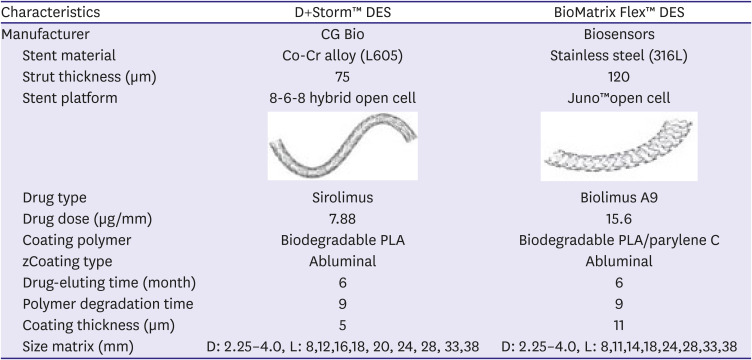
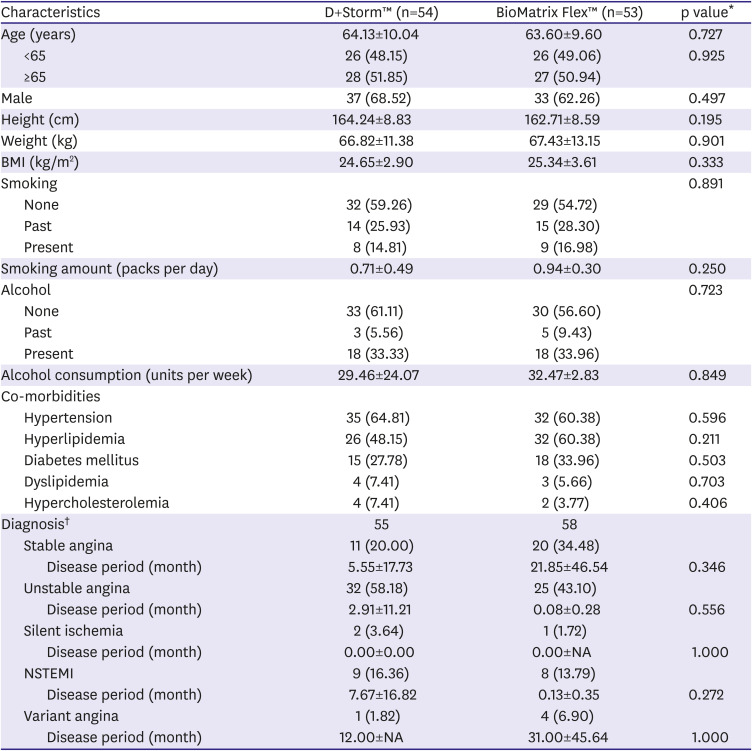
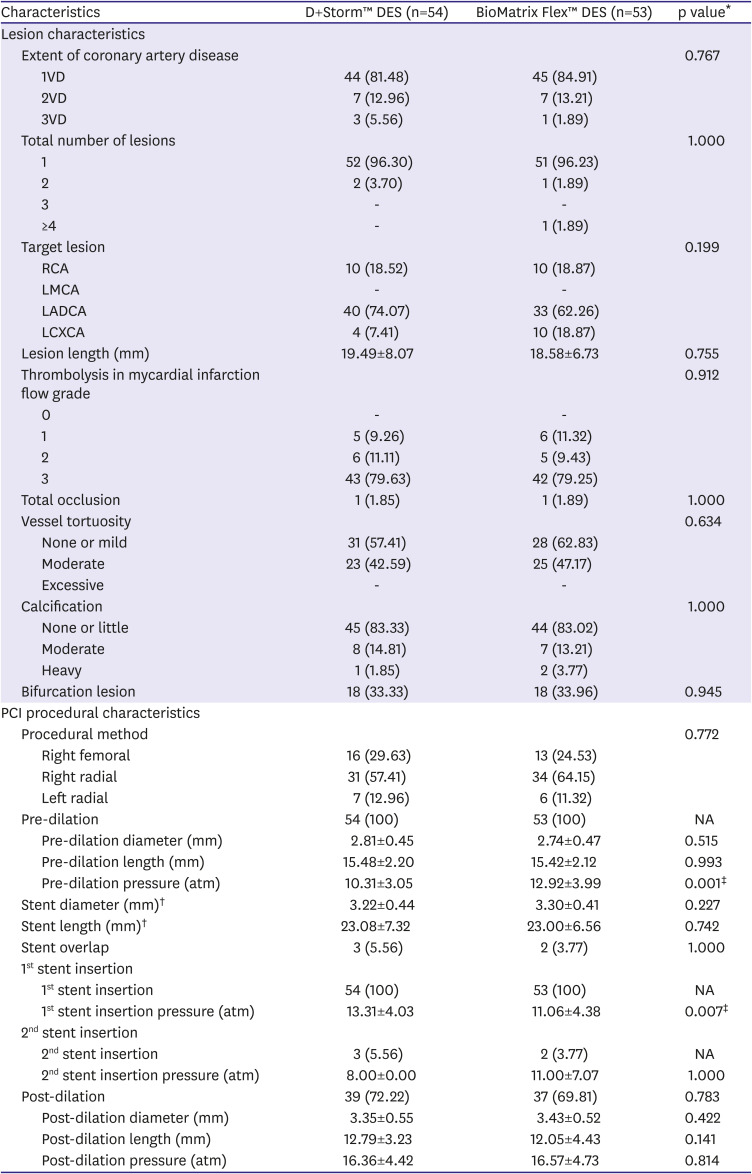
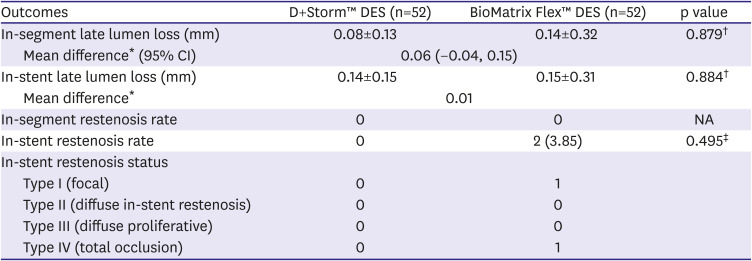
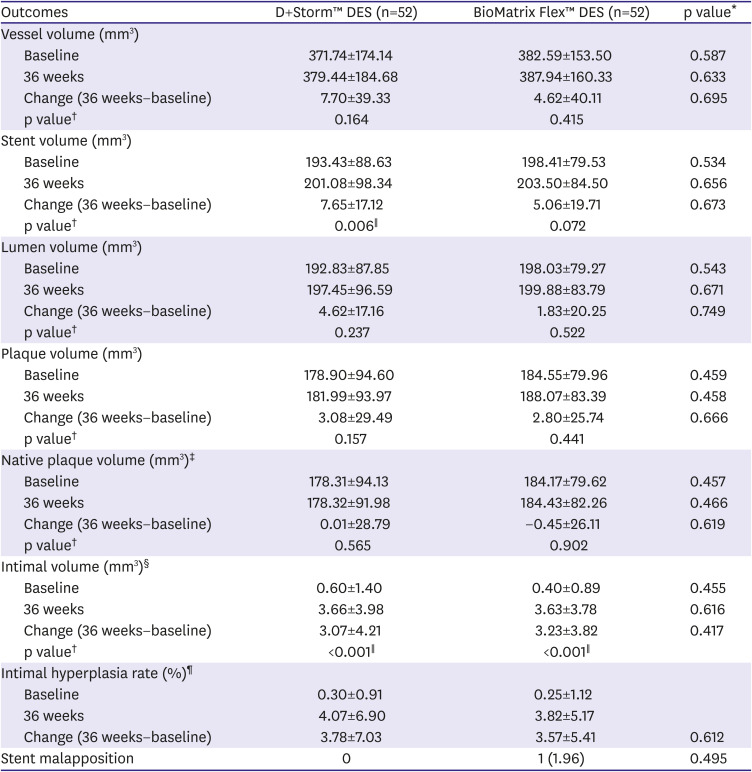





 PDF
PDF Citation
Citation Print
Print





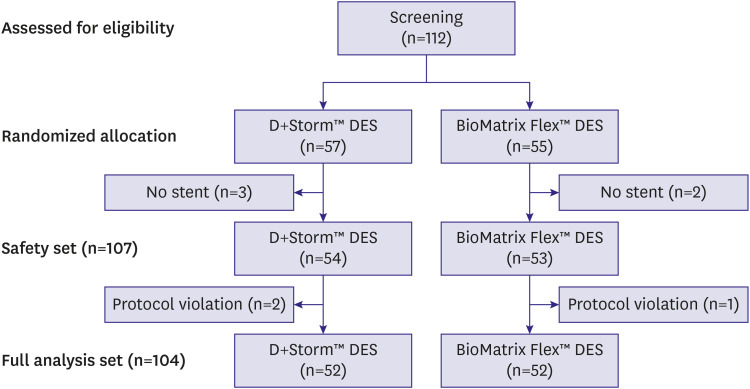
 XML Download
XML Download